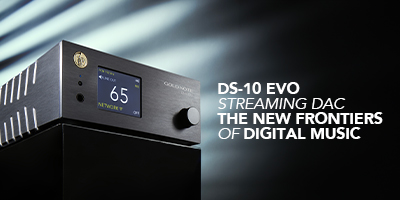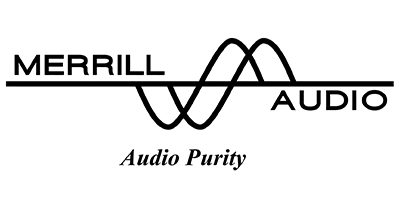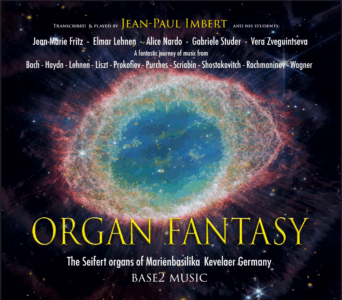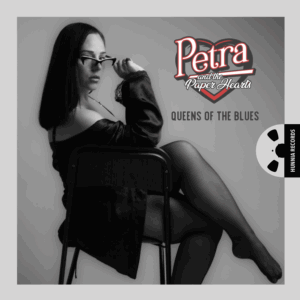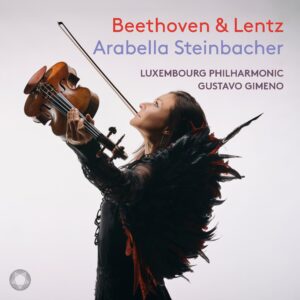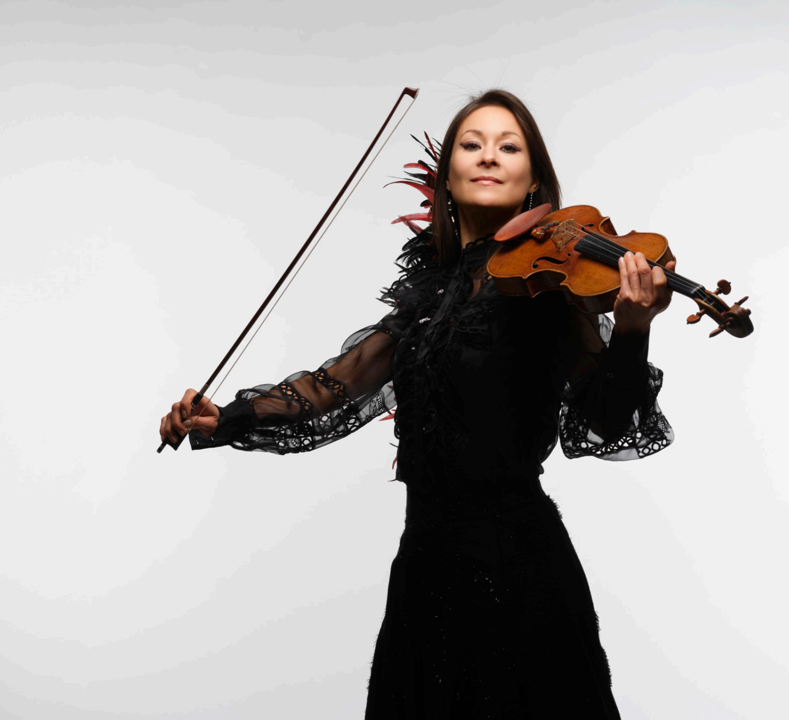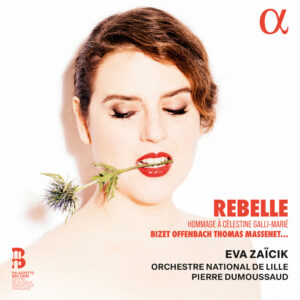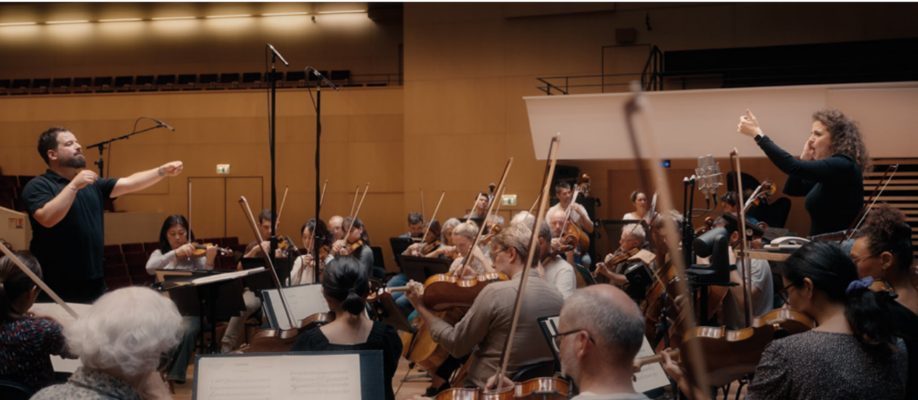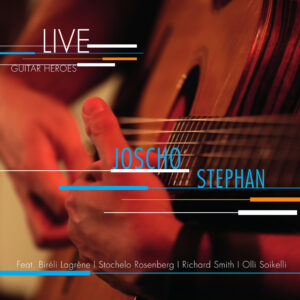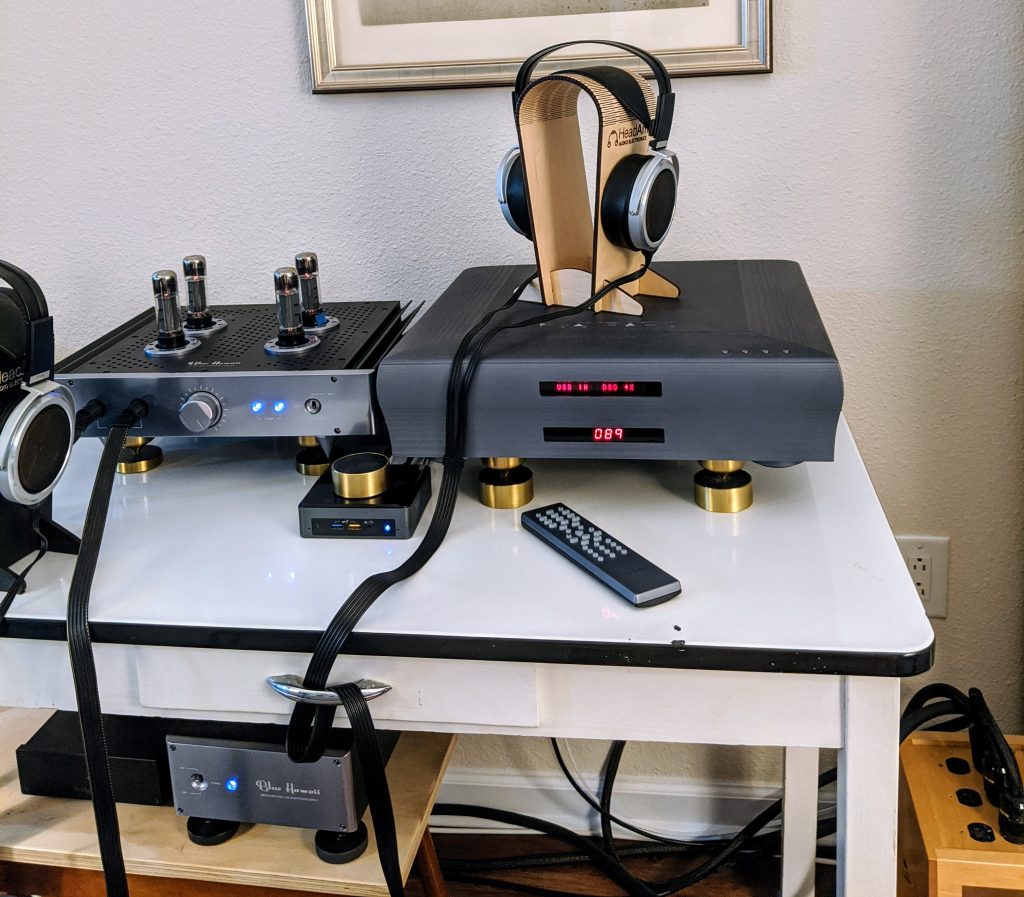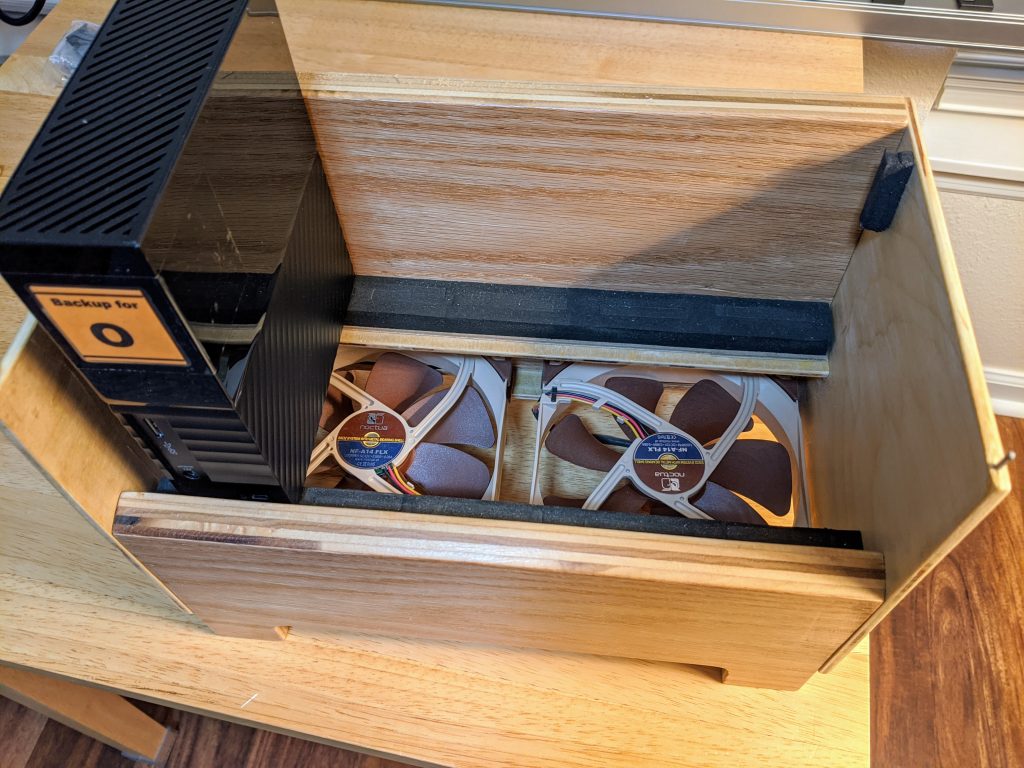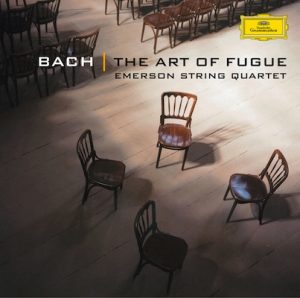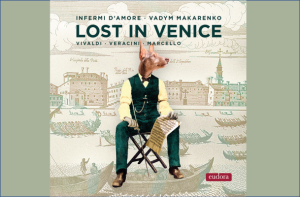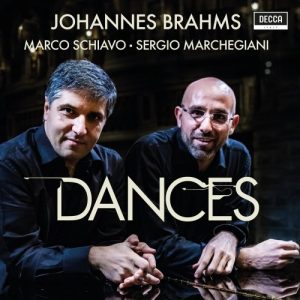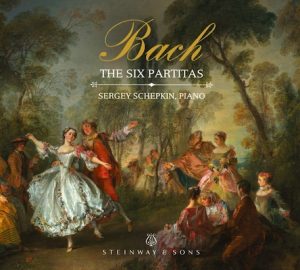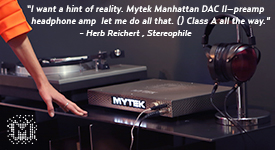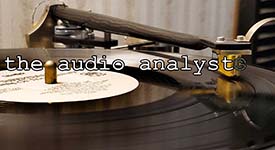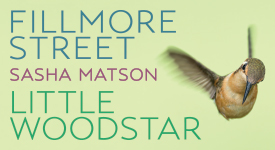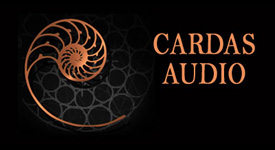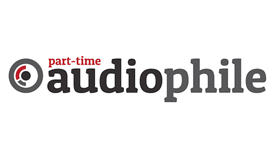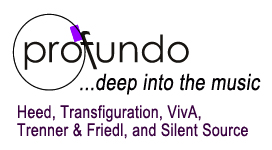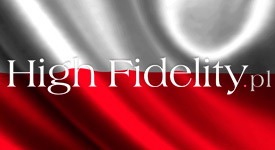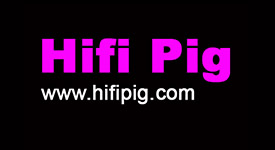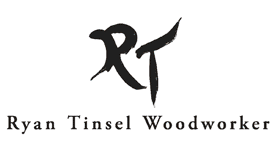NativeDSD continues to earn highest recommendations from me as a preferred source for high resolution downloads. There are some labels they don't have access to, unfortunately, but their catalog continues to grow with new labels showing up every few weeks. This means their new releases outpace my ability to write about them. But, I'll keep highlighting the best of those I get to hear. And this Recent Finds article has some outstanding ones, including a new Pure DSD256 Blues recording from Hunnia Records, a truly remarkable new organ recording from Base2 Music, and a very special new recording by violinist Arabella Steinbacher (both available in 32-bit DXD). All three of these recordings are just superb.
As to why I recommend NativeDSD, you might read my note at the end of this article. It is reposted from my recent article about some of the classical music composed within the last 25 years, which you can read HERE.
Organ Fantasy, the Seifert organs of Marienbasilika Kevelaer. Base2 Music 2025 (32-bit DXD, DSD256 up to DSD1024) HERE Edit Master Sourced
If you love well recorded organs, recordings with all the resonance, air, and full frequency response that you hear when you're listening to it live, you need to get this outstanding new recording made by Jake Purches for his Base2 Music label. Over recent years, Jake has released some stellar organ recordings, but this is perhaps his best yet. When I first listened to the opening track, all I could say in my head was "WOW! It sounds so good, so realistic, so filled with the sonics of an excellent organ played in a marvelous natural acoustic space."
The music on this album is a treat as well. Not your usual fare—the music selected runs the gamut from original works by the organists involved, to transcriptions, to a few old favorites. Both the opening and the closing works are improvisations by organist Elmar Lehnen (b. 1965). The first, Sea fantasy, interplays with the sound of the sea, recorded specially from a beach in Norfolk. The second, Organ Fantasy, improvises against the Sanctus bells of Marienbasilika Kevelaer (the church in which the organ is situated). The realism in the sounds of the bells is stunning.
A particular favorite composition of mine on this album is a work by Base2 Music owner and recording engineer, organist/composer Jake Purches (b. 1966): Sumbing and Sindoro. About this composition, Jake writes, "Sumbing and Sindoro are sister strato-volcanoes located in Java, Indonesia. My wife, Sri Raharti, lived in this region and they are visible from the roof of our house. I wrote this piece in an ABA form, with each 'A' section representing one of the mountains, while the middle 'B' section, which is gentler and more melodic, symbolises the valley where many people live with its fertile farmlands. The view of these towering volcanoes from the roadside is truly an imposing sight and impressed me greatly. The intense reflection of landscape contours brings forth grandiose sustained chords with harmonies that are subtly pan-diatonic and modal, often with tonal conclusions. The piece concludes with a building crescendo and final 'tutti' on full organ."
Purches' Sumbing and Sindoro is an impressive work, and sonically one of the highlights among a plethora of excellence in this album.
Many of the works on the album are transcriptions created by the great organist and teacher Jean-Paul Imbert. Thus, the music on the album is quite varied, and an exploration of new sounds in somewhat familiar settings.
1. Sea fantasy - Improvised and performed by Elmar Lehnen (1965-)
2. Les Préludes Symphonic poem - Franz Liszt (1811-1886) performed by Alice Nardo
3. Étude in C-sharp minor, Op. 2, No.1 - Alexander Scriabin (1872-1915) performed by Jean-Paul Imbert
4. Jazz Waltz - Dmitri Shostakovich (1906-1975) performed by Vera Zveguintseva
5. Prelude in G Minor, Op. 23, No. 5 - Sergei Rachmaninov (1873-1943) performed by Jean-Marie Fritz
6. Vocalise - Sergei Rachmaninov performed by Jean-Paul Imbert
7. Piano Concerto No.5 in F minor, BWV 1056 2nd part - J.S. Bach (1685-1750) performed by Jean-Paul Imbert
8. The Seven Last Words of Christ on the Cross - Franz Joseph Haydn (1732 -1809) performed by Jean-Paul Imbert
9. Romeo and Juliet (exerpts) - Sergei Prokofiev (1891-1953) performed by Gabriele Studer
10. Sumbing and Sindoro - Jacob A. Purches (1966-) performed by Gabriele Studer
11. Tristan and Isolde - Richard Wagner (1813-1883) performed by Elmar Lehnen
12. Organ Fantasy - improvisation with the Sanctus bells of Marienbasilika Kevelaer performed by Elmar Lehnen
And as much as I enjoyed the variety of music, and the variation that comes from different organists each performing in their own style (all clearly influenced by their teacher, Jean-Paul Imbert, but yet different), the glorious Seifert Organ of Marienbasilika, Kevelaer, is ultimately the star of this album. Jean-Paul Imbert writes that the original intention when planning this recording was that they would record playing on the Van den Heuvel organ of Saint-Eustache Church in Paris in recognition of Imbert having served as the substitute organist of that great organ from May 1971 to September 1993. However, due to the poor condition of the instrument, and other unforeseen circumstances, they were forced to seek a different venue. And, as much as I was hoping to hear that great organ, this proves a serendipitous change for now we get to hear one of the greatest Romantic-style organs in Germany. And hearing it is absolutely to be cherished for it is a marvelous instrument, captured beautifully in this superb Base2 recording.
Edit May 4, 2025: The gain in this DSD256 recording is set a bit low to ensure no distortion on peaks, and the microphone placement is well within the acoustic space to capture the natural reverberation within the Marienbasilika. For playback, you might want to turn you volume us just a bit more than you ordinary set it. Ann suggested the organ "sounded distant," but that is not my experience once I increase the volume just a bit.
Seifert organ of the Marienbasilika, Kevelaer, one of Germany's largest Romantic-style organs
Petra and the Paper Hearts, Queens of the Blues. Hunnia Records 2025 (Pure DSD256, up to DSD1024) HERE Edit Master Sourced
Great blues being played in Budapest! Yes, that's right: Budapest, Hungary. The artists on this album breathe the blues. And they honor the great original women performers that made the blues a worldwide phenomenon, such as: Memphis Minnie, Peggy Lee, Ruth Brown (aka "Miss Rhythm"), LaVern Baker, Ma Rainey, Bessie Smith (about whom Jani Joplin said, "She showed me the air and taught me how to fill it"), and Sippie Wallace—all of whose songs are represented on this album.
Vocalist Petra Pintér has a distinctive and very unique vocal quality that is almost addictive, and her delivery is just spot on delightful. I've not heard her before, but I hope Hunnia Records will entice her back for another album soon. Her fellow musicians are similarly engaging: pianist Szabolcs Nagy, guitarist Sonny Wild Cow (who also sings with Petra on one cut), and double bassist Csaba Pengő (whose solo album Autumn Rain in a Garden in a Secret Garden I highly recommend, HERE).
The recording quality makes this a very special album—on first hearing, it blew me away. Recorded in Hunnia Records' ProVibe Park Studio, the band played as if they were performing live with an audience. Their music-making was captured directly to DSD256 with no overdubs, and with no editing-out any faults. This is the kind of high wire recording art that makes for great listening!
As pianist Szabolcs Nagy comments in the enclosed booklet:
"Our primary consideration for the recording was to tape the songs as they used to back in the days, when musicians played together in one recording room as if they were playing in front of an audience. This meant that there was no possibility of subsequent corrections of the songs. We had to make compromises about whether some of the less well-produced sounds could remain on the recording, if the performance were otherwise musically and emotionally successful. Consequently, we accepted notes and sounds that strictly speaking are 'mistakes,' resulting in these songs providing both the musical experience and the sense of the era."
And an excellent musical experience this is. With sonics that are as direct, alive, and REAL as one can hope to hear played back in your home listening room.
Highly recommended!
Petra and the Paper Hearts: Sonny Wild Cow, Petra Pintér, Szabolcs Nagy, and Csaba Pengő
Beethoven & Lentz Violin Concertos, Arabella Steinbacher, Gustavo Gimeno, Orchestre Philharmonique du Luxembourg. Pentatone 2025 (32-bit DXD, DSD256) HERE Edit Master Sourced
Arabella Steinbacher does it once again! What a wonderful performance and a great album release from Pentatone. There are many great performances of this work—how many performances of Beethoven's Violin Concerto does one need in a music library? Well, whatever the number, add this one. Steinbacher turns this well trod music into a new and, quite special, experience. If you love the work performed on modern instruments, then this live in-concert recording will be one you should hear.
Gustavo Gimeno and the Luxemburg Philharmonic are perfect partners, delivering a performance that fully complements Steinbacher. As "Chris from Lafayette," moderator of the Classical Court forum of Audio Asylum, commented about her performance just the other day (HERE), "I have never heard a more beautiful rendition of the work! Every phrase is caressed, yet without impeding the forward motion or disrupting the overall dimensions of the work. What makes it all the more amazing is that it's a 'live' in-concert recording, a fact you'd never guess from the perfection of execution to be heard... The Luxembourg Philharmonic..., while maybe not in the highest class of orchestras, is nevertheless alert and plenty expressive and under Gimeno's leadership... This recording needs to be heard just for the sublime Beethoven!"
I've been a Steinbacher fan for many years. This is perhaps the best performance, among many excellent ones, that I've heard from her. It is well within the modern performance mainstream for this work, but with just that extra bit of special sauce that makes this a unique and highly appreciated performance. Recommended without reservation!
The companion work on this album is a new violin concerto composed for Steinbacher by Belgian-born composer Georges Lentz (b. 1973), who writes in the enclosed booklet, "When I was first approached by Arabella Steinbacher in 2018 about writing a new violin concerto for her, my immediate thought was of all the great masterpieces in the repertoire, and I felt there was no way I could add anything to all that incredible music." He's far too humble. The work he created is a wonderful piece of thoroughly modern conception that should make the concert hall rounds. It is a work, as Lentz describes, "of both great lyricism and breakneck virtuosity." At times dark, at times light and lyrical and effervescent, the work is complex, challenging, and thoroughly engaging. I encourage you to spend time to listen, and re-listen. This new concerto by Lentz has a lot of content that only several listens will begin teasing out.
The recording by the Polyhymnia International B.V. team of recording engineer Karel Bruggeman and producer, balance engineer, and editor Erdo Groot is excellent. As is typical for this team, the original recording was made in 32-bit DXD for exceptionally good resolution, the microphone placement captures a very natural presentation of the orchestra as would be heard in the concert hall, and the balance of soloist and orchestra is very nicely done. Without obvious spotlighting, inner detail of orchestra sections is excellent. This is a perfect example of how to capture a live concert performance. Kudos!
Arabella Steinbacher, from the enclosed booklet.
Rebelle: An Homage to Celestine Galli-Marie, Eva Zaïcik, Orchestre National de Lille, Pierre Dumoussaud. Alpha Classics 2025 (96k) HERE Edit Master Sourced
Okay, just shoot me now, but I'm enjoying the heck out of mezzo-soprano Eva Zaïcik's performances on this album of selected arias. She is just amazing.
I am the first to acknowledge never having been a fan of opera. But in my older age, I find that I'm enjoying classical vocal music more and more, and even whole operas are now known to pass across my audio system with some enjoyment. And, occasionally, I come across a performance of opera selections that just knocks me off my feet because I can't believe I'm enjoying it so much. This album is one of those surprises. The selections are engaging, often great fun, sometimes deeply moving. But it is the singing of French mezzo-soprano Eva Zaïcik that has completely captivated me. And this confession surprises me.
Eva Zaïcik (far right) in recording session with Orchestre National de Lille conducted by Pierre Dumoussaud.
Guitar Heroes Live, Joscho Stephan. MGL 2022, 2025 (96k, DSD256) HERE Edit Master Sourced
Okay, this is not the usual high resolution digital file normally within my brief from Dr. David. But... This album is simply wonderful! You've got to hear this if you have any affinity for finger picked guitar of the jazz variety. The title, Guitar Heroes, is fully apt. Joscho Stephan and his guests will blow you away.
For this album, guitarist Joscho Stephan and his Trio invited a host of top guitarists to perform some of their favorites across a series of four live concerts. From those performances, 12 titles were selected for this album. The music on the album includes all time guitar favorites, including Breezin' from George Benson, In A Sentimental Mood from Duke Ellington, Mainstreet Breakdown from Chet Atkins, Love Me Tender from Elvis Presley.
The NativeDSD page for the album well summarizes the variety of excellence on this album: "Swing a'la Django Reinhardt and Bossa rhythms are perfectly represented by the Dutch guitar legend Stochelo Rosenberg and the young Finnish guitar virtuoso Olli Soikkeli... The 'Fingerpicking Champion' Richard Smith provides a contrast to this. Biréli Lagrène shows once again why he has been one of the leading guitarists on the European music scene for 40 years."
The album is closely miked, so there is a ton of detail on each instrument, but not much sense of the overall acoustic space in which the performances occurred. Given that these are live recordings with an appreciative audience, that's probably not such a bad exchange.
If you are a fan of Friday Night in San Francisco Live with Al Di Meola, John McLaughlin, and Paco De Lucia you will appreciate and enjoy this album. It is good enough to place alongside that great album.
NativeDSD's Higher Rate Program
I normally listen to the original edit master file when I can get it from NativeDSD because my DAC will do best for me with this file. The edit master file for this album is a 96kHz 24-bit WAV file (downloadable from NativeDSD). For grins, I also downloaded the DSD256 iteration created by Tom Caulfield from this edit master using HQPlayer Pro. I was curious if I could hear any difference in playback through my Playback Designs MPD-8 DAC. And, yes, there were differences, but the differences are system-specific and not transferable to anyone else's audio system. The DSD256 file created by NativeDSD's Higher Rates Program from the edit master is excellent.
My point is this: the Higher Rates Program is very effective, the results are excellent. If your DAC does not have the internal processing power to convert the lower rate PCM file internally on-the-fly, or if the algorithms used in your DAC are not up to the standard of HQPlayer Pro (very few are), you should really consider downloading one of the higher resolution files Tom has created under NativeDSD's Higher Rates Program. You may find you have a much nicer sonic result by doing so.
Oh... Ann says I need to tell you what I hear between the DSD256 file and the edit master 96kHz file when listening through Playback Designs MPD-8. The modulation to DSD256 from NativeDSD is just ever so slightly softer on the leading edges of notes, just a bit softer overall. The MPD-8 modulates the edit master 96kHz file with a bit more definition, a bit greater resolution, and a bit more snap. Could I tell for sure in a blind test, hmmm, not sure I could. To some extent, the difference may simply come from a difference in aesthetic sensibility between the designers of the algorithms being applied. Again, this is all VERY specific to the individual equipment/software involved. YMWV.
For some additional suggestions, you might look at: Choosing the Best Sounding File Format, with Free Sample Downloads
A footnote to many of the recordings discussed in this article
* Edit Master Sourced—Special credit is due to NativeDSD. They have recently been identifying when an album released on their site comes from the "edit master" as the source. The edit master is the first realization of the recording where all the components are mixed and processed together prior to delivery distribution reformatting. In other words, the sound quality is as good as pure as it can possibly be from this recording. Excellent! Watch for "Edit Master Sourced" in the album listings on the NativeDSD website. And this will be the last time I include this footnote explaining the term as I continue noting it on various albums as it applies.
Why I recommend downloading files from NativeDSD (reposted)
You may have noticed that I provide download links to the NativeDSD website when albums can be found there. This is certainly the case for the dozen and more albums I mention in this article. I do this for two reasons:
1) It is not always easy to find a source for the DXD and DSD256 files I prefer listening to. The download link is to help interested readers find those file resolutions, often as edit masters or direct modulations from the edit masters.
2) For my listening, I look for the highest quality sonics possible. I trust NativeDSD to provide that highest quality. I have learned that the commonly heard expression "bits are bits" is simply not true when it comes to audio files—a lot of degradation in sound quality can occur depending on how digital file and format conversions may have occurred. In this respect, digital is little different than analog. Every digital conversion leaves artifacts. And when the digital file has been generated iteratively (e.g., this file converted to the next, and then that next converted to yet a next), some material and audible degradation occurs. NativeDSD's delivery of alternative formats and resolutions carefully avoids this. Plus, whenever possible, NativeDSD will work from an edit master file in its distributions. Other providers may simply pass along whatever the distribution channel sends to them, so one has no idea what may have happened to the file being purchased.
For those with DACs that benefit from receiving higher resolution files, NativeDSD has pursued its Higher Rates Program. They start by offering DSD and DXD recordings in multiple DSD bitrates and formats, as provided by the labels. But additionally, under special arrangement with select labels, NativeDSD also obtains the original DXD (352.8kHz PCM) edited masters, or the never processed in PCM original edited DSD session files. With those NativeDSD creates higher DSD bitrates of these releases. For more information, see their blog post HERE. (However, I also suggest you read my article, Choosing the Best Sounding File Format with Free Sample Downloads, before diving off the deep end.)
In a final comment, if you download a lot, as I do, I highly recommend you look into NativeDSD's "Membership" plans. They have two--each for a monthly subscription fee that you can cancel at any time. Both plans give you early access to select album releases. Both plans provide a discount on the cost of purchases. The higher level plan additionally includes automatic access to any lower DSD or DXD resolutions of one's purchases. You can review the terms of these membership offerings HERE to see if one or the other might make sense for you.
Full disclosure: as a music reviewer I am privileged to receive free downloads from NativeDSD (as well as some other distributors and labels) for auditioning in order to write my reviews. No obligation to say nice things, I say what I want to say. But, I don't bother taking the time to write about something I didn't care for—there are too many good recordings to waste time on the poor.

